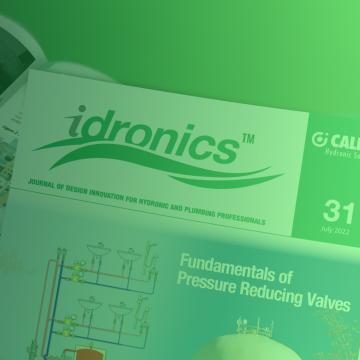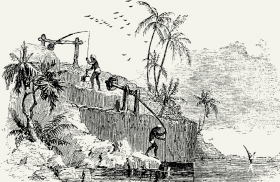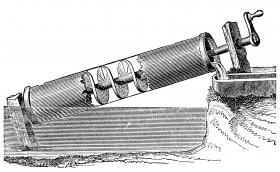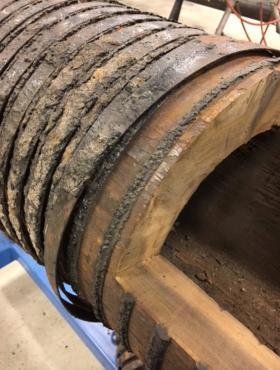The purpose of any domestic water distribution system is to deliver fresh water at the required temperature and pressure at each point of use inside or outside a building.
Maintaining water pressure within an acceptable range is vitally important in all types of building plumbing systems. Unregulated systems can cause high mechanical stress on system components, flow noise, valve cavitation, water hammer and uncomfortably high flow rates from faucets and shower heads. Such systems also needlessly waste water, an increasingly valuable and diminishing resource.
Access to fresh water is essential to human life. Historically, the spread of human population across the globe was closely linked to the ability to access fresh water. The gradual improvements made to early water distribution systems unquestionably improved human health and quality of life.
For most of human history, potable water has been utilized without pressurized distribution. The vast majority of human civilizations developed near the shores of rivers and lakes, where access to clean water involved minimal transportation efforts.
The motive forces needed for water distribution were supplied through many approaches, most of which functioned by lifting water from some source, such as a lake or river, to an elevation that allowed it to flow over increasingly longer horizontal distances in open channels.
One ancient method of water elevation was the shadoof. Dating back to 2000 B.C. in Mesopotamia, shadoofs were made from a flexible tree branch suspended on a wooden frame. One end of the branch was lashed to a weight and the other end was attached to a bucket, as seen in Figure 1-1.
The bucket was dipped into a water source. The lever force of the shadoof helped lift the bucket to a higher elevation with far less human effort compared to dipping clay water jars or buckets directly in the water and carrying them to a higher elevation.
Multiple shadoofs, arranged in a stairstep configuration as shown in Figure 1-2, could lift water high enough to allow it to flow several hundred feet away from the shoreline. This mechanical improvement allowed for expanded water infrastructure.
As humans developed more complex and efficient mechanisms to lift water, the distribution possibilities grew. The Archimedes screw, shown in Figure 1-3, along with other inventions by Leonardo da Vinci, used a screwshaped auger combined with mechanical rotation to lift water. Initially, human hands turned the auger shaft.
Later versions were adapted to animal power. Similar to an ox-driven rotary mill, consistent, powerful rotation increased the reliability and quantity of “lifted” water. Later, other forces, like river-powered water wheels and simple wind turbines, were utilized for lifting water from a source to a higher elevation.
In some regions, lifting water was never necessary. Early public water delivery systems were documented in modern-day Iran around 700 B.C. These systems routed water from elevated sources in the mountains above Tehran through sloped channels to pools in the city. Until 1933, these systems remained the sole source of water for Tehran.
In western civilizations, the Roman aqueducts are often cited as the benchmark for early water delivery infrastructure. In the areas surrounding Rome, a hilly landscape separates water sources and the walled city. One aqueduct, built in 144 B.C., transported water 23 miles to Rome. However, only the last seven miles of the system were aboveground. The combination of tunnels and raised aqueducts maintained the consistent slope necessary for water to flow from its source to where it was needed using only gravity as a means of propulsion.
These ancient water delivery systems transported water in open channels and at atmospheric pressure. As such, they relied solely on gravity as a means of maintaining flow. All water flowing through the open channels must have first been located at, or lifted to, a higher elevation relative to where the water was being delivered. Open channel flow also created the possibility of biological contamination.
Water delivery systems began to change as the ability to create closed pipes advanced. Early pipes made of stone, fired clay, wood (see Figures 1-5 and 1-6) and hammered sheets of lead eventually gave way to pipes fabricated of iron, concrete and other metals. These improvements, in combination with progress in methods of joining pipes together, allowed water to be maintained under pressure. This greatly improved the ability to distribute water to areas that could not be served by gravity-based flow.
Today, plumbing system designers and installers have an abundance of piping materials to effectively transport water from the source to point of use.
See idronics 26 for a detailed discussion of modern piping materials and joining methods for plumbing and hydronic systems: idronics #26
Currently, there are many devices available to transport water, isolate portions of water delivery systems, and control water temperature. However, one design challenge remains: consistent pressurization.
This issue of idronics discusses several scenarios where the pressure within modern plumbing systems is higher than desired for a variety of reasons. It then examines how to correct those situations through proper design and use of pressure regulating devices. The resulting systems reduce water waste, mechanical stress on plumbing components and noise. They will also deliver appropriate flow rates at plumbing fixtures and water-fed appliances.







